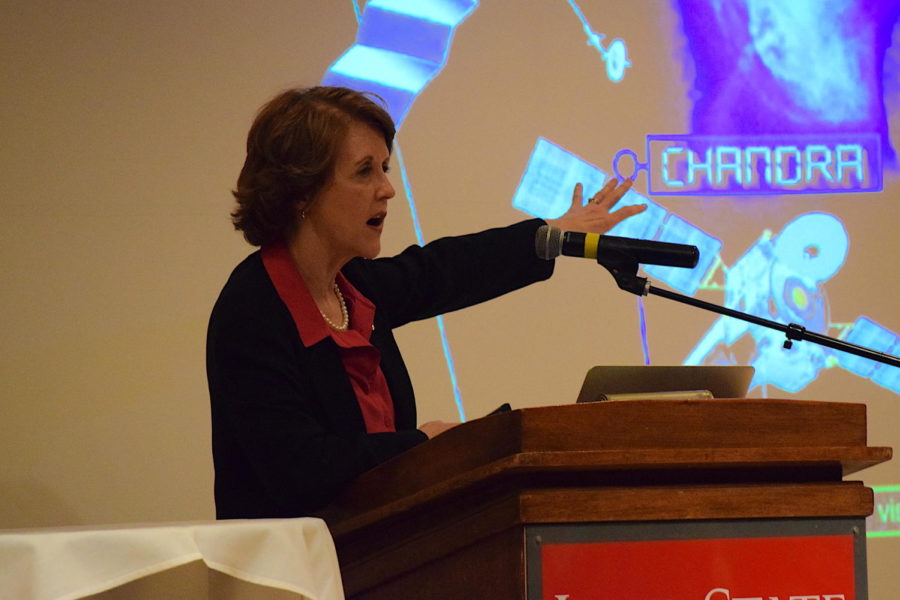Kathryn Thornton lecture inspires STEM students, space lovers
March 6, 2017
As part of the Women’s Leadership Series, Kathryn Thornton spoke about her time working for NASA on Monday night in the Sun Room of the Memorial Union.
Thornton worked at NASA for 12 years, participating in three shuttle missions and helping repair both the International Telecommunications Satellite and the Hubble Space Telescope. She also logged more than 975 hours in space. Thornton now serves as the director of the aerospace engineering program at the University of Virginia.
Thornton’s objective for the evening was “to convince” the audience on why we explore space, and where space travel is headed in the next several decades.
“We explore space because we dream of the future,” Thornton said at the start of the lecture.
Thornton focused on three universal phases of one’s life and understanding of history: ‘Before Me’, ‘Me’ and ‘After Me,’ and how her understanding of space, and exploration as a whole, began with the Space Race and the launch of Sputnik. Thornton said that she never considered being an astronaut because growing up, astronauts were men, in the military and had experience as pilots.
However, after completing a postdoctoral fellowship in Heidelberg, Germany, and working for the Army, Thornton was selected by NASA to be an astronaut in 1984 and went to work at the Kennedy Space Station. Thornton then went on to go into space on the space shuttles Discovery, Endeavor and Columbia, as well as go on “space walks” to repair the Hubble Space Telescope.
“When we look at something from Hubble, we’re looking at something that was formed 14 billion years ago,” Thornton said. “So, Hubble is sort of like a time machine.”
While Thornton retired from NASA in 1996, she believes that there is plenty more to be done, and can be done, when it comes to space travel.
“The era of ‘Me’ is not over,” Thornton said. “I still have dreams.”
One of the things Thornton mentioned was that the “Space Age” is only just getting started. The Apollo missions and moon landing were only the beginning of what could be a 200 or 300-year period of space exploration.
Thornton brought up three possibilities for the future of space exploration: going to the moon and staying on lunar bases, asteroid retrieval into planetary orbits and the biggest dream of all — going to Mars. While NASA has faced pushback from various administrations, serious planning has gone into the possibility of exploring Mars, and Thornton hopes that it can be done.
Closing with a quote from Konstantin Tsiolkovsky, Thornton left the audience confident in the future of space travel and the potential it has for the future generations.
“‘The Earth is the cradle of humanity, but mankind cannot stay in the cradle forever.'”
















